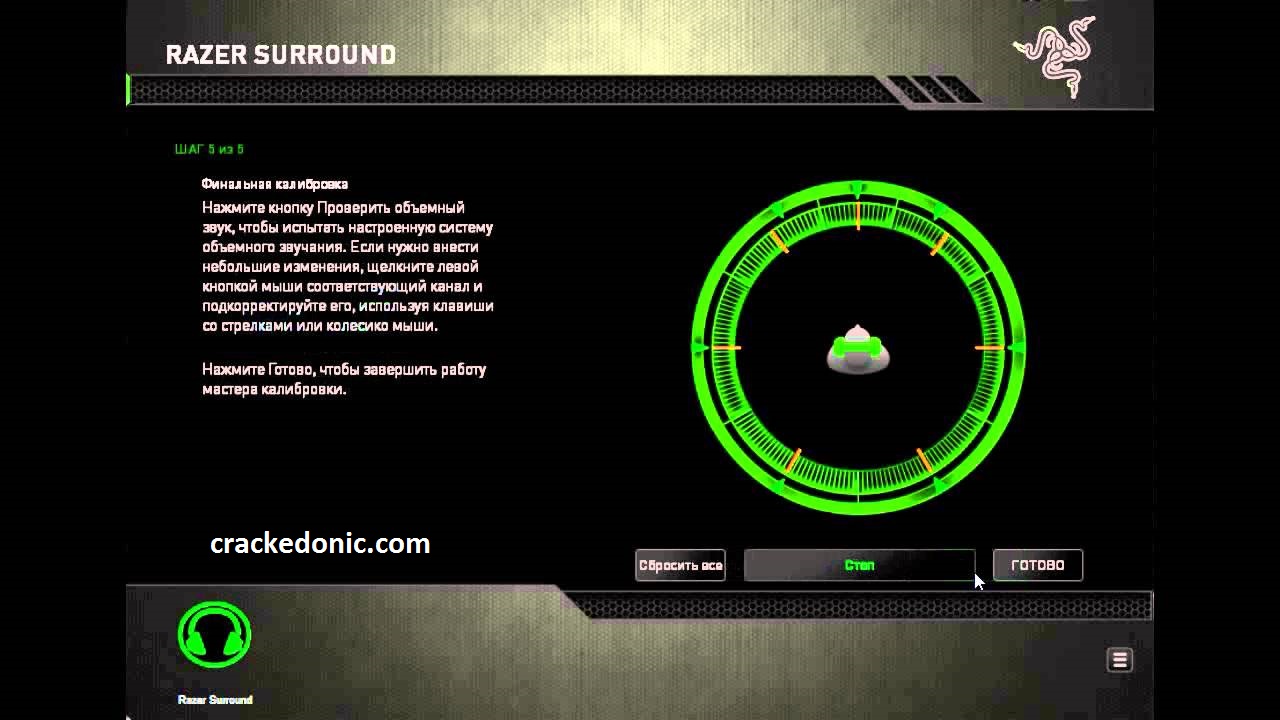

Creative’s SBX Pro Studio Surround sounds tinny, hollow, and doesn’t even seem to help with positioning. Their combined CPU utilization hovered around 5% on the low-end system that we used for testing.Ĭompared to the virtual surround sound offered by Creative and Dolby, this seems like a step up in almost every regard. Running on anything even close to modern hardware, you’d be hard pressed to notice that Synapse or Surround is running. If you’re worried about CPU and memory usage, don’t be.
#How to put in razer surround pro code software
It seems that the software actively amplifies voices while simultaneously cutting back on other sounds. Turning up either too much can cause noticeable degradation in audio quality for both the voices and the other sounds.

Much like the bass boost, both of these settings are best used in moderation. They don’t work nearly as well as you’d like, but if you’re having problems hearing your friend over game noise this should be helpful (although you could always turn down the game's in-game audio instead). The voice clarity and volume options work. Keep cranking it up and the bass will get progressively looser and less enjoyable, eventually overpowering any vocals in the song. At max, the bloated bass ends up ruining the mids and highs, but when used in moderation it really does help make the bass punchier and more pronounced. Some songs benefited from cranking it up while others were ruined by the excessive bass. We found that the ideal amount of bass boost depends on what you’re using it on. Razer’s bass boost works fine and can help enhance the bass in any type of audio. People either seem to love it or hate it. Extra features like the bass boost and the EQ are easily accessible and work surprisingly well.īass boost is something that gets tossed around a lot. All of the settings have simple checkboxes and sliders that look good and work as you’d expect. Razer Synapse may not be perfect, but Razer Surround works really well with it.

Most of the software bundled with headphones and sound cards are pretty horrific-buggy, ugly, and only half-functional. Razer Surround has a very simple interface It also has one of the simplest interfaces that we’ve had the pleasure of using. What separates Razer Surround is that it’s a piece of standalone software that doesn’t require a USB dongle or a specific headset. Creative and Dolby have had their respective virtual surround sound technologies for years and have been licensing them out to headphone manufacturers and games alike. Anyone who’s ever used virtual or actual surround sound in Counter-Strike knows just how much of an impact it can make, and Razer’s implementation is no exception.Īll-in-all, Razer Surround isn’t anything new. Being able to hear footsteps around corners and through walls is absolutely essential. It's very satisfying.Ĭounter-Strike: Global Offensive doesn’t really try to provide an immersive experience, but it’s a game that benefits from positional awareness. The experience almost goes so far as to make you completely forget that you're playing a game, but rather sitting around and absorbing everything that’s happening around you. The chaos of hearing grenades explode around you are intensified, and distinct. Bullets whizz by and give you a noticeably better sense of their origin, the sound of tank treads emanates audibly from a specific direction. Enabling the software to run Battlefield 3 instantly made things seem more real.

Whether it’s Counter-Strike: Global Offensive or Battlefield 3, the virtual surround sound works like a charm.


 0 kommentar(er)
0 kommentar(er)
